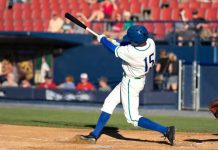
Writer Calibe Thompson | Photography David I. Muir
I started life as a chubby kid, and I blame that on my addiction to food. It has an uncanny ability to be satisfying and crave-inducing at the same time. Where I come from, there is no quinoa or fennel or wheatgrass. Neither is there gumbo or collards or sweet potato pie. Just a freshly picked, thoroughly seasoned, tropical-themed selection of yummm.
Within the Caribbean region, with a population of less than 40 million, from island to island, different foods steal the show. Enjoy all things conch in The Bahamas, try turtle soup in the Cayman Islands, it’s pork in Cuba, and plantains in the Dominican Republic. I’d never seen a flying fish before I visited Barbados, but it’s popular enough there to be the national dish. We’ve made ackee part of our national dish in Jamaica, but they won’t even touch it in Trinidad. For them, it’s all about the curries and rotis. The list goes on.
The Caribbean is possibly the world’s truest melting pot, and the foods we all eat have the influence of our shared ancestry in every bite. Africa is in the ground provisions, fritters, and heavy puddings we enjoy. The influence held by France or Spain or Amsterdam over one region or another can be tasted in the crust of their version of meat pie (patties, empanadas, or paté), whether sauces are heavier on the tomato or citrus, or whether we’ve even heard of eggplant or parsley. The Asian countries brought us rice, breadfruit, exotic sweets like jackfruit and starfruit, and spices like turmeric.
It’s mind-boggling to me how macaroni and cheese can taste exactly the same in Chicago, Texas, and Colorado, but has distinct recipes and even different names in Jamaica, Haiti, and Barbados. If you go to Grenada, you must order rice and peas, but in The Bahamas, they only serve peas and rice. On my home island, it is made in one pot with coconut milk as a key ingredient, along with kidney beans or, if you feel like living it up a little, pigeon peas. Imagine my surprise at learning that in Haiti, it needs tomato paste and mixed seasonings to be acceptable, or realizing that in some of the Latin islands the rice and beans never actually touch each other until they’re plated. How naive and underexposed I felt!
I still refuse to cook if I don’t have to, and I’d never call myself a foodie, but creating the Taste the Islands television series has opened me up to so much I never knew about our food. Today, chefs are deconstructing traditional recipes in amazing ways. Just the other day, I tried Chef Irie’s ackee hummus and mango gazpacho. (He won’t share the recipes. You’ll have to hire him if you want to try them). At Solomon and Kuff in Harlem, they serve goat chops, and cocktails made with a base of goat fat. And there are multiple restaurant weeks and food festivals across the Caribbean region showcasing true culinary ingenuity.
If you’ve been stuck on the fennel and wheatgrass train, I suggest you take a detour. Start with Flatbush, Little Havana, or Stone Mountain, and work your way out from there. As Chef Thia would say, bon manje (eat well)!





























